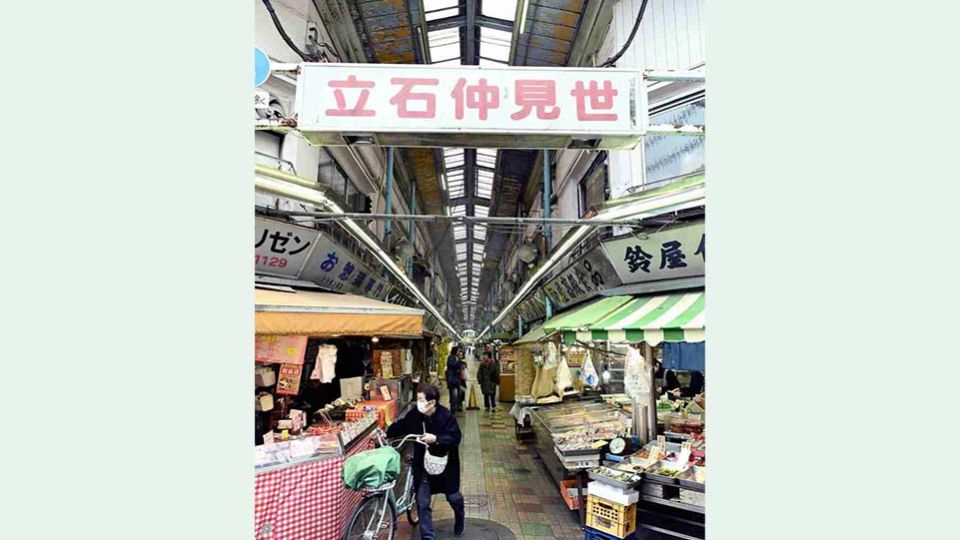April 21, 2025
TOKYO – Lined with various stores and evoking memories of the Showa era (1926-1989), a shopping street in Tokyo’s Katsushika Ward is slated to be demolished in a few years as part of a redevelopment project.
The Tateishi Nakamise shopping street is immediately south of Keisei Tateishi Station. A friendly local landmark, it is believed to have started as a black market after the end of World War II.
The arcade is about 160 meters long and is lined with about 50 stores, including a long-established delicatessen, a senbei rice cracker store and a clothing store.
I could hear melodies that brought back memories of days gone by when I arrived.
First, I went to the Suzuya Shokuhin delicatessen next to the street’s green-colored entrance. The store dates back to 1946 when the father of the current owner, Kotaro Nagatani, 84, began selling leaf vegetables on the black market after he was discharged from service.
“In the past, we advertised the shopping street by dropping flyers from a plane and riding around on a bicycle with a promotional banner,” Nagatani explained.
I noted a basket hanging at the storefront.
“It’s a change container. In the old days, every store used it like a cash register,” Nagatani said.
His store’s shelves were lined with colorful ready-to-eat dishes and pickled food.
I bought cooked uzura mame pinto beans, which sell for ¥300 per 200 grams including tax. The store started cooking them about 70 years ago, when the sugar rationing system ended. The cooked beans were sufficiently sweet and pleasantly firm.
As I walked deeper down, I saw the yellow, red and green floor tiles lit by the sunlight streaming through the faded windows of the street’s overhead awning.
At the Maruchu Kamaboko store, which sells kamaboko fish cakes, I found steaming hot oden stew.
Upon hearing my order, Yukiko Hidaka, 75, the owner of the store, efficiently put the items that I wanted into a plastic bag one by one.
The cooked daikon radish (¥200 including tax) tasted good. It soaked in the broth well even though it was thick in size. I was both physically and mentally satisfied.
Until around the end of the Showa era, Tateishi Nakamise had been crowded with customers mainly from nearby factories and the ward office. Nowadays, it has been visited by fewer customers mainly due to the opening of large retailers. Some of the stores in the arcade have gone out of business, evidenced by their shutters that are always closed.
The area in front of the station is full of old wooden buildings and faces disaster prevention issues. It is undergoing redevelopment, and Tateishi Nakamise is scheduled to be demolished in a few years.
Walking through the street I could hear the voices of shopkeepers saying to passersby, “Have a nice day.” I saw children run up to store owners, saying, “I’ll give you snacks.” I burned these scenes into my memory, while feeling sad that such everyday warm conversation would soon disappear.
Tateishi Nakamise shopping street
Address: The area around 1-20-4, Tateishi, Katsushika Ward, Tokyo
Access: About a 30-second walk from Keisei Tateishi Station
Memo: The area is popular for “senbero,” which means people can get “berobero” (very drunk) with only “sen” yen (¥1,000).

